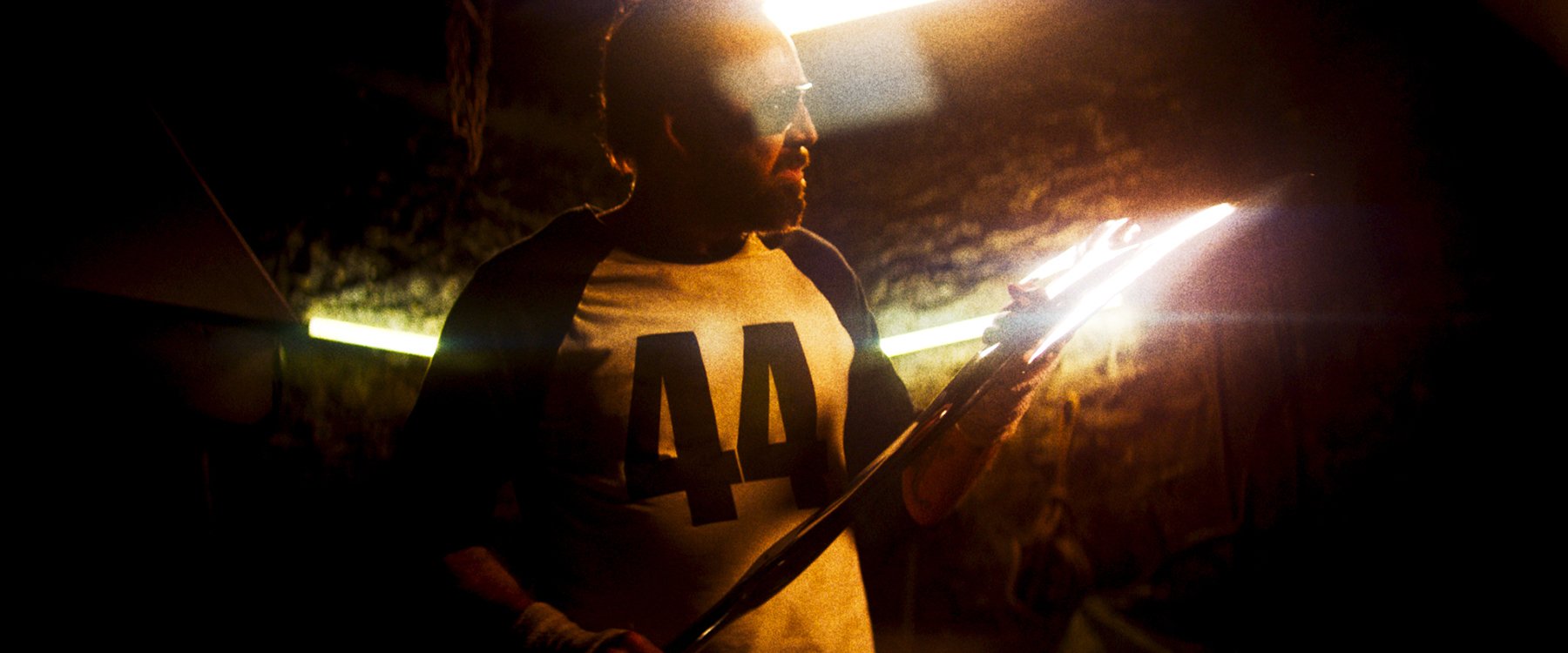
Mandy: Edge of Darkness
Cinematographer Benjamin Loeb brings intense lighting and color techniques to Panos Cosmatos’ tale of supernatural mayhem.
Unit photography by Guillaume van Laethem, courtesy of RLJE Films.
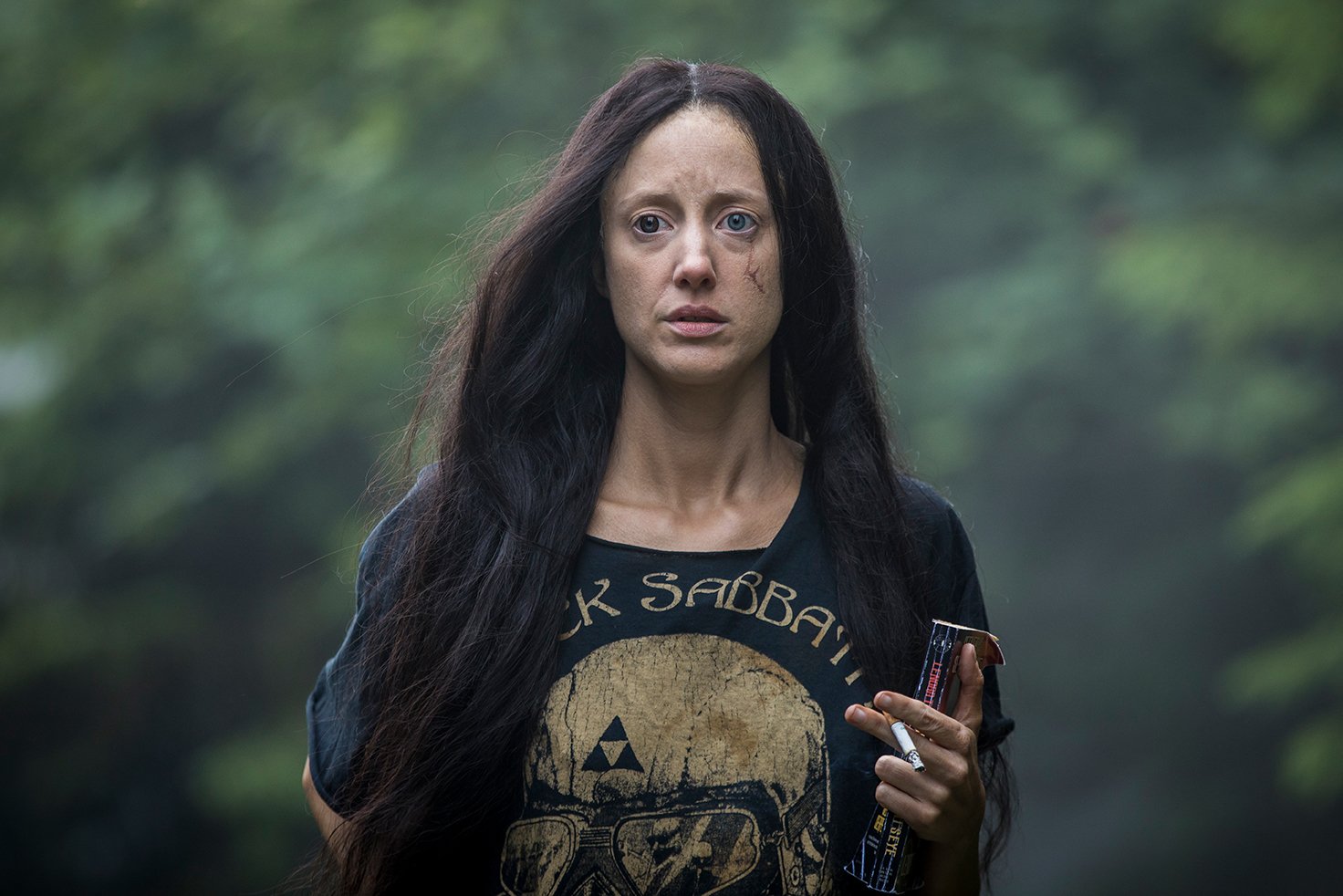
Photographed by cinematographer Benjamin Loeb and directed by Panos Cosmatos, Mandy is set in a dimension resembling our 1983. It tells the story of a warm-hearted lumberjack named Red Miller (Nicolas Cage), who has the love of his life — the sensitive but hard-tempered Mandy Bloom (Andrea Riseborough) — stolen from him by a gang of demonic bikers called the Black Skulls, and then burned to death in his presence by an apocalyptic cult called the Children of the New Dawn. He does not take it well.
“I like to motivate light from specific sources, but Panos would ask me to light in ways that didn’t make sense, so I had to reset my brain. It wasn’t so important that the light be motivated, but that it felt right for the story.”
— cinematographer Benjamin Loeb
Mandy is a movie about dealing with loss and grief, and like his previous feature, Beyond the Black Rainbow [podcast here], it draws deeply from Cosmatos’ personal experience. In 1997, his mother passed away after a difficult and protracted illness. “I thought I was going to disintegrate,” the director says. In 2005, his father — legendary Greco-Italian film director George P. Cosmatos — died, and Cosmatos found himself alone, spiraling further into depression until he was struck by a moment of clarity. “I was sitting in my living room, and suddenly I saw myself 10 years in the future, still sitting in that living room, not ever having done anything with my life,” he recalls. Cosmatos immediately moved to Vancouver and started production on Black Rainbow. At the same time, he began developing the idea that would later become the script for Mandy.
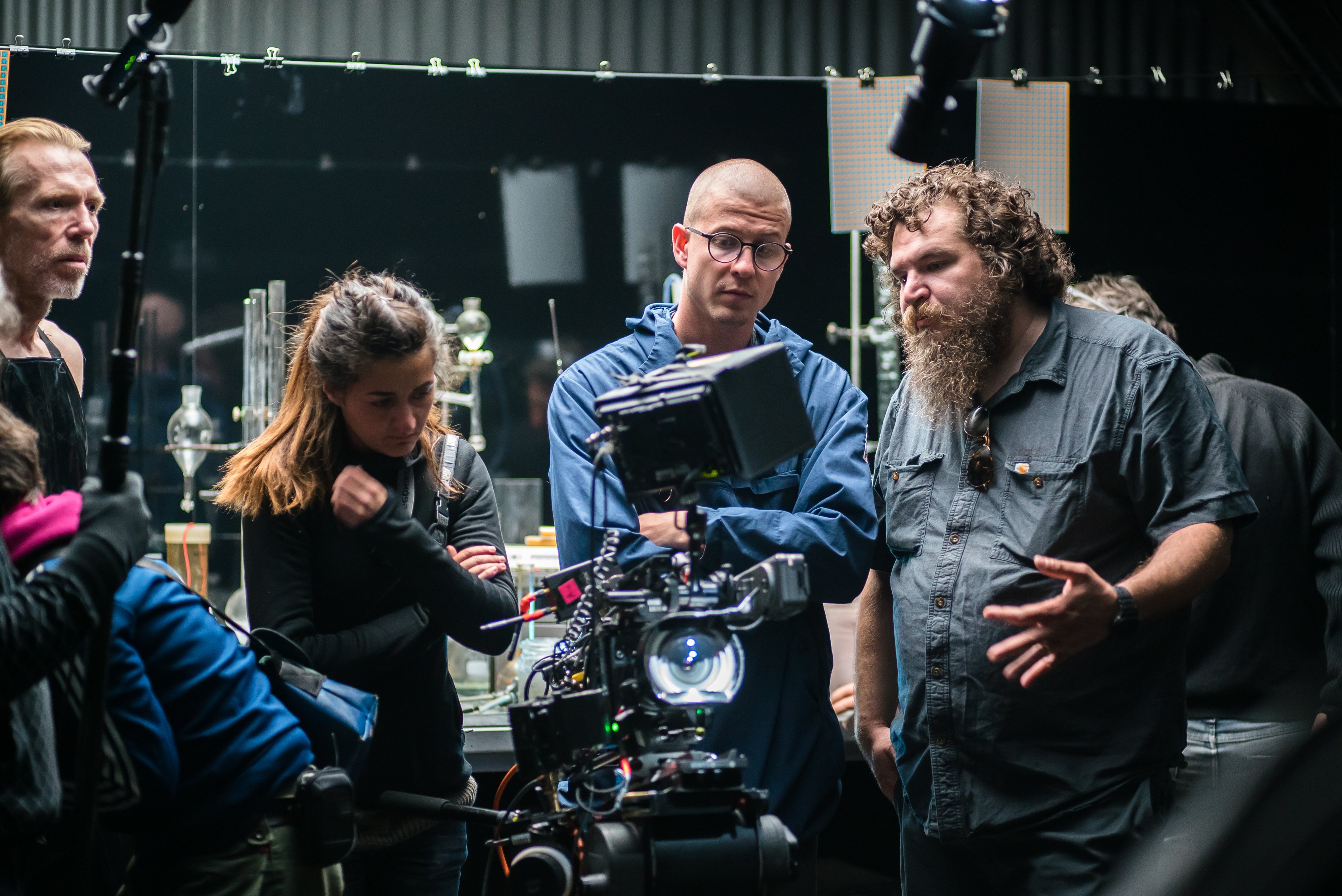
Due in part to scheduling issues arising from Cage’s breaking his ankle on another production, Loeb — a Kenyan-born, Vancouver-based Norwegian cinematographer — joined Mandy’s Belgium-based crew a mere two weeks prior to the start of principal photography.
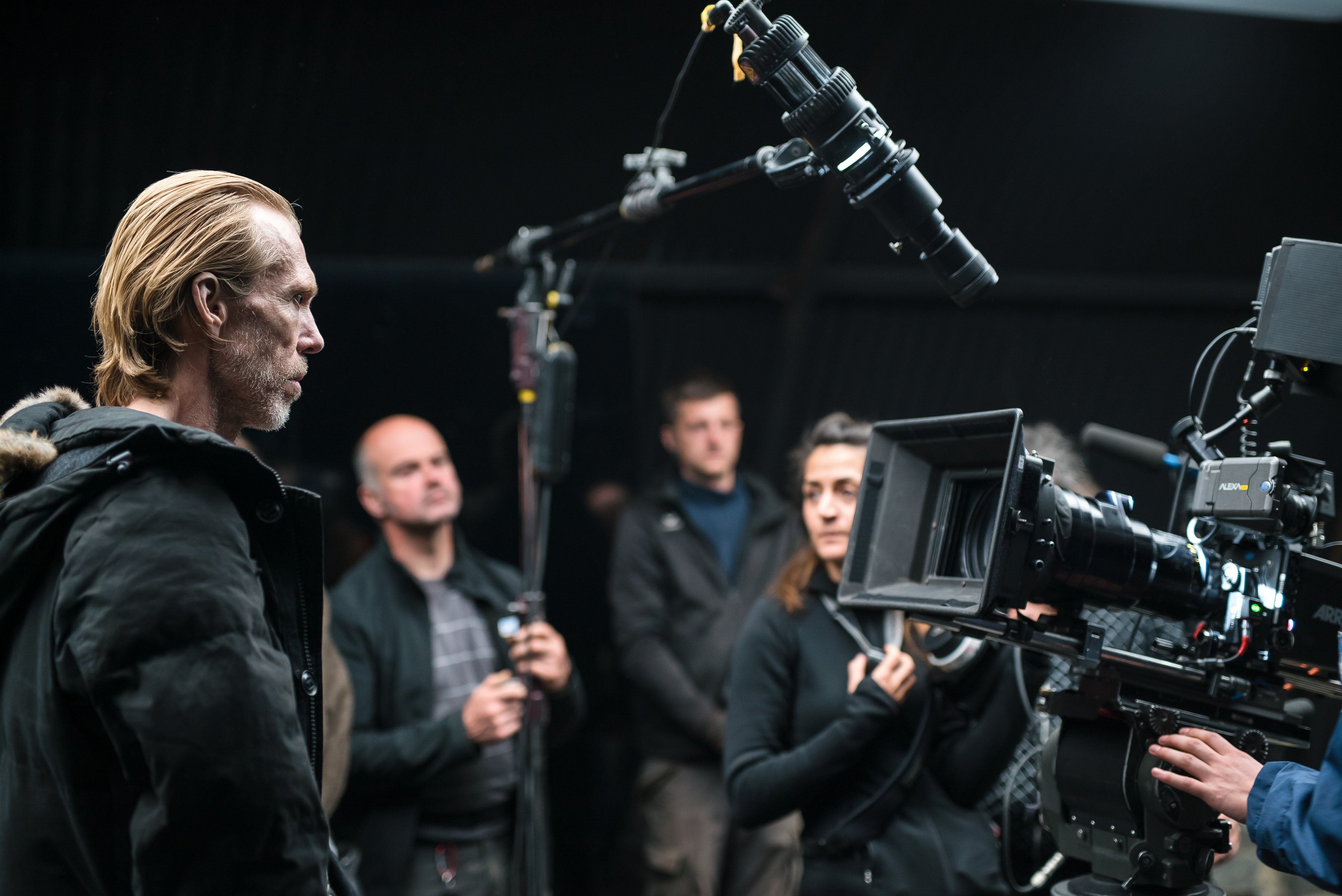
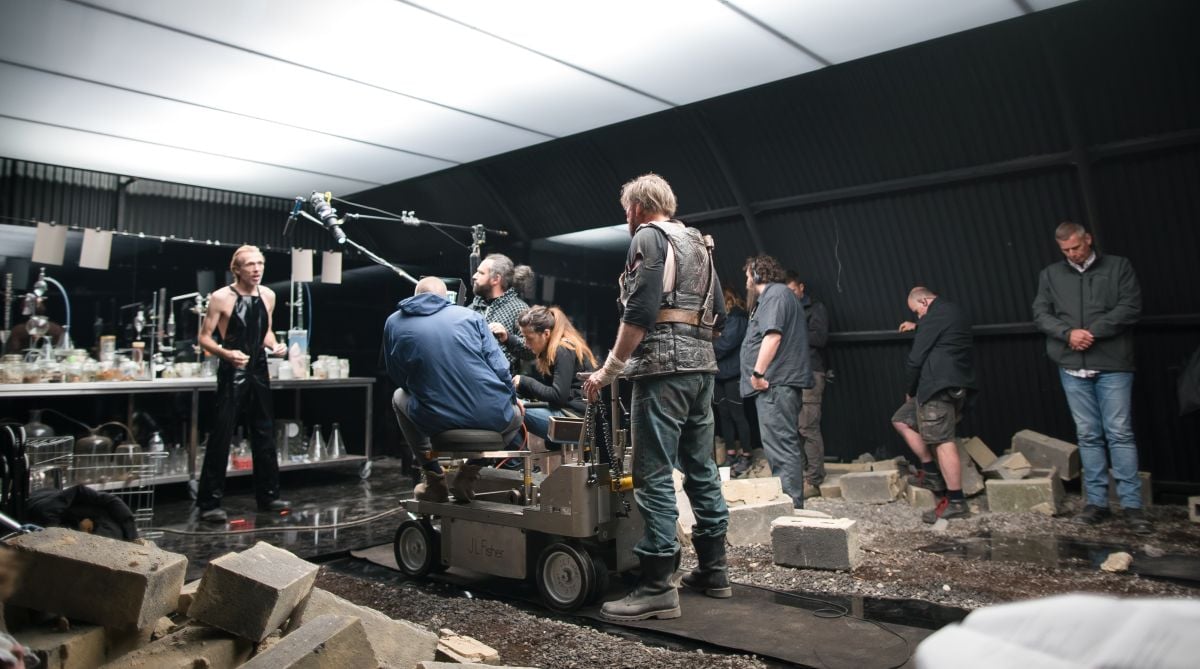
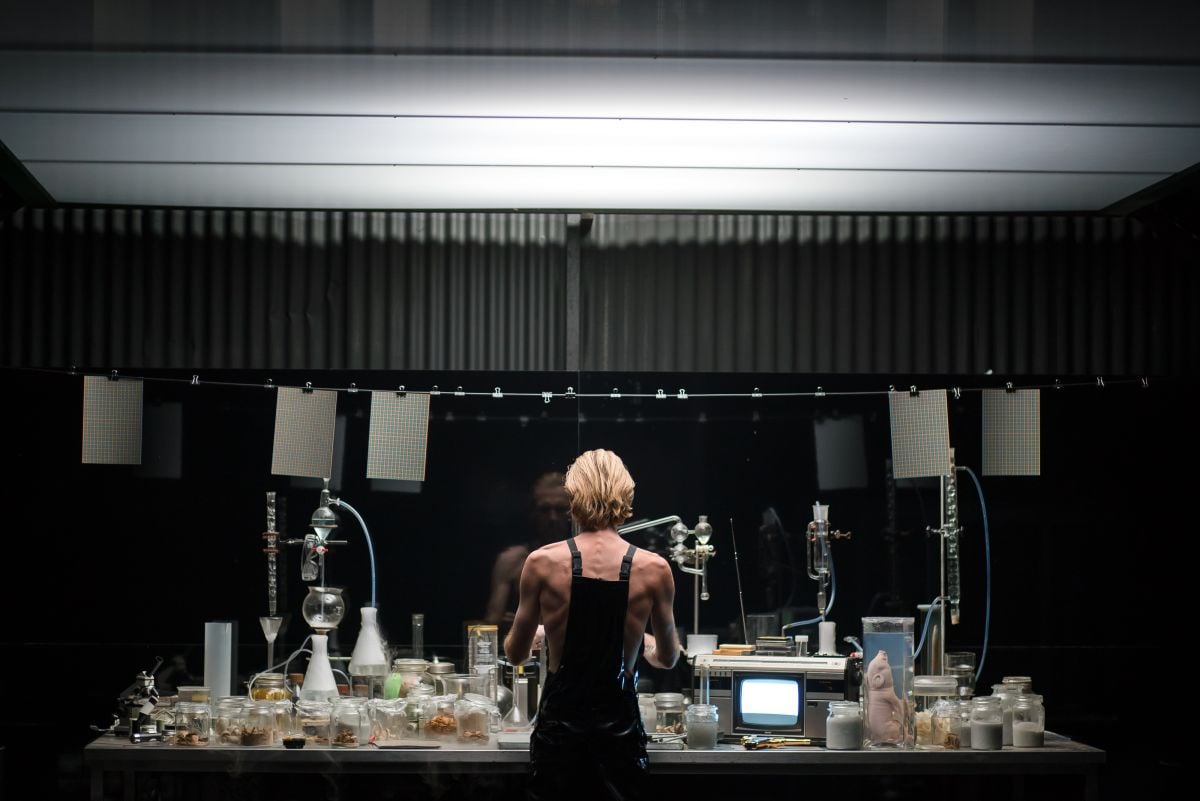
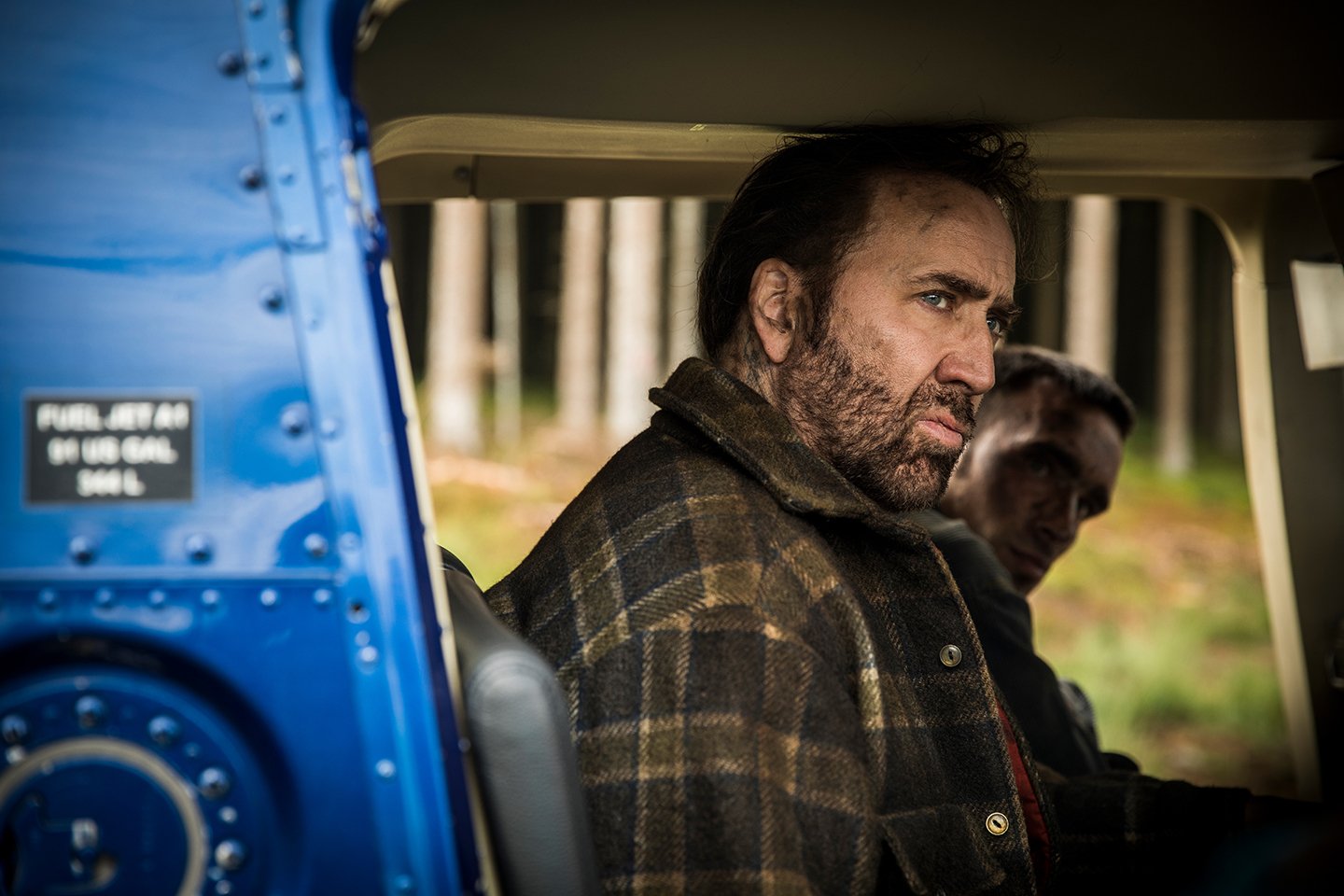
From the beginning, Mandy was intended to be more action-adventure oriented than Beyond the Black Rainbow. When Loeb asked the director for a list of visual references, Cosmatos returned with The Hitcher (1986), Days of Thunder, Revenge (1990), Psycho III,the animated Fist of the North Star and Cobra. “He was pretty specific about which films would be references for night exteriors, which would be for lenses, [and which for] day interiors,” says Loeb. One detail in particular was the way an ND grad filter intrudes into the frame — a reference from Black Rain,photographed by Jan De Bont, ASC (AC, Sept. ’89) — and sometimes even over the actors’ faces.
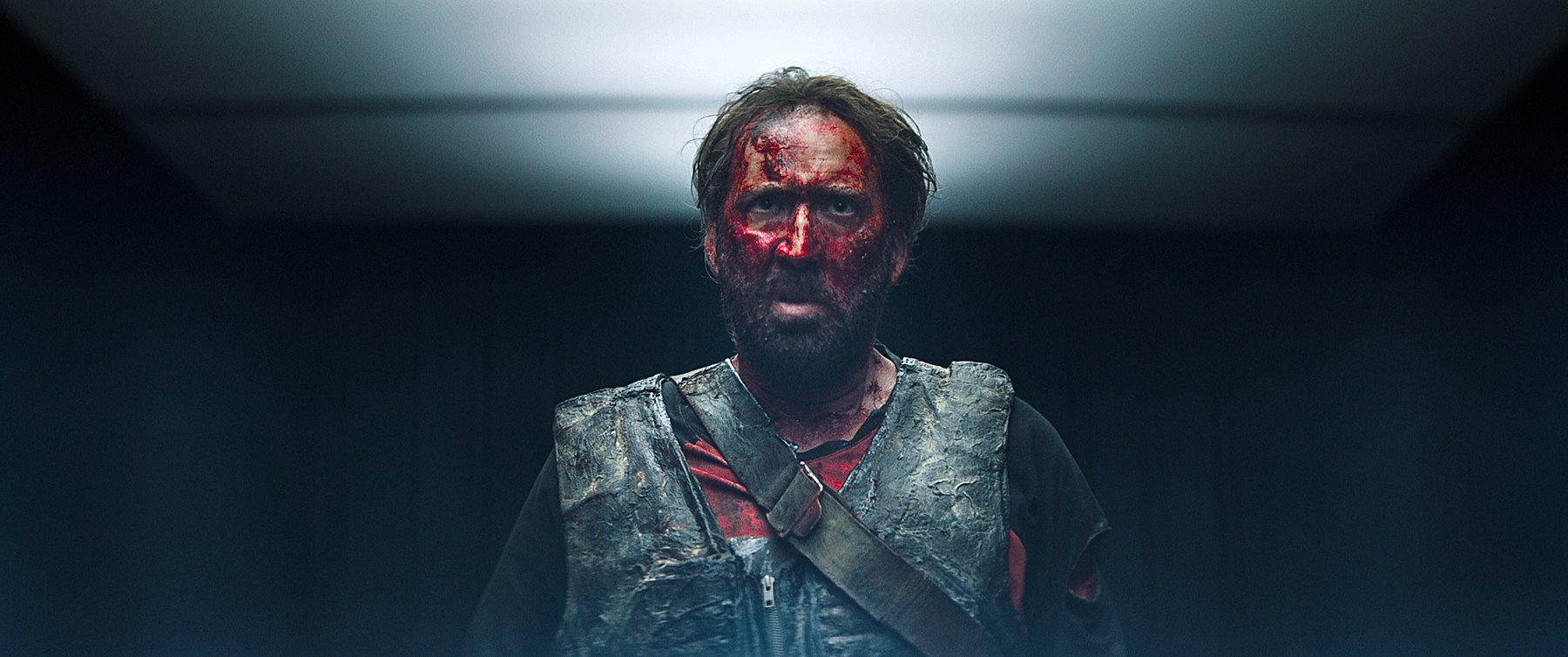
A small LED matte-box rig was used to send flares directly into the lens or to catch the edge of the filter glass. This technique was applied “pretty much the whole way through,” Loeb says. “We would just change the angle of the LED to match the angle of the key light in the scene.”
Loeb describes the creative process for shooting Mandy as far removed from his previous experiences behind the camera. “I like to motivate light from specific sources, but Panos would ask me to light in ways that didn’t make sense, so I had to reset my brain,” he says. “It wasn’t so important that the light be motivated, but that it felt right for the story.”
Though the original plan had been to shoot on 16mm film, the feature was ultimately captured digitally, with the filmmakers employing an Arri Alexa Mini and XT from Panavision in Paris, recording to 128GB and 256GB CF cards for the Mini and 512GB Codex XR Capture Drives for the XT.
When it came to moving the cameras, Loeb and Cosmatos agreed early on that they would always be on either sticks or a dolly, and never handheld. “We wanted the camera to be present, but not in a way where it felt subjective,” says Loeb. He chose Panavision Primo Anamorphic Prime lenses for their quality and size, noting that “they were the biggest and chunkiest lenses we could find, and nobody would ask me to put that on my shoulder — in addition to the fact that it best represented the look Panos and I were after.”
A wide Primo spherical prime, most often a 10mm, was used for lending an expansive feel to more intimate locales, and those shots were cropped to match the 2.39:1 anamorphic aspect ratio of the rest of the movie. The production also carried a pair of close-focus Primo sphericals — a 14.5mm and a 21mm — for specific applications.
The filmmakers laid out a strict visual language, limiting their framing choices to long and wide lenses. Wide-angle focal lengths were used for the majority of moving shots, while the long lenses were used for close-ups and mediums.

The production used primary colors as a vehicle to rotate through emotions, contrasting mostly blues and reds against the warm, natural tones of the early scenes between Red and Mandy in their cozy little pocket of the universe, and later against the similarly pleasant hues associated with the Children of the New Dawn. Loeb accomplished much of this through a combination of lens filters — Tiffen’s Corals, Chocolates, Tobaccos, Reds — with sometimes four or five of them in front of the lens at a time.
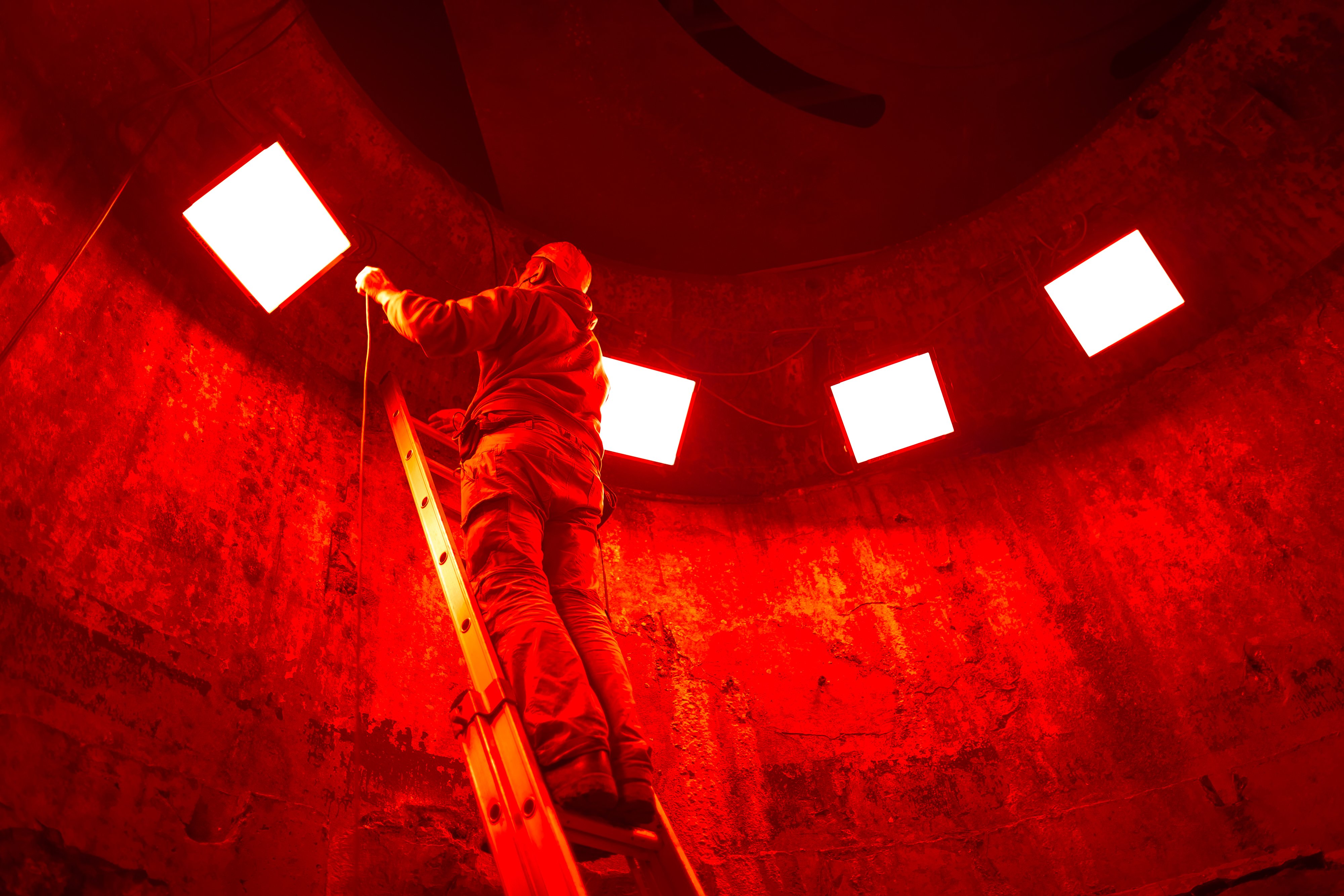
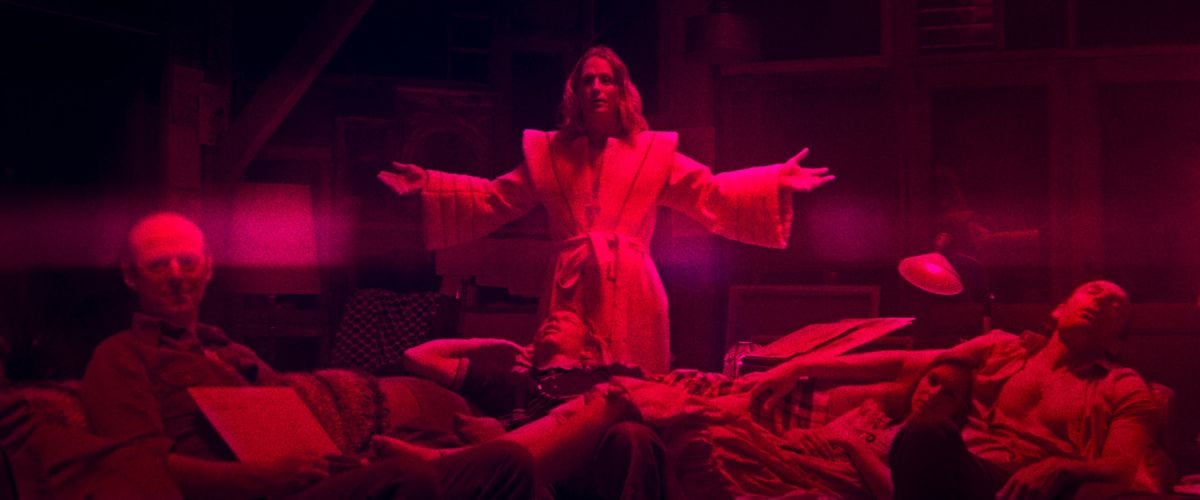
Upon his late arrival in Belgium, Loeb was given one day to go over the schedule with producer Josh Waller and 1st AD Baudouin du Bois, and three days to tech scout, which provided him and gaffer Dirk van Rampelbergh with an opportunity to assess their pre-rigging options and fine-tune their lighting package from Lites Camera & Lighting in Belgium. Other than Loeb, Cosmatos and Waller, nearly everyone on the Mandy crew was a local to the Wallonian region in southern Belgium, including van Rampelbergh, key grip Témoudjine Janssens, 1st AC Myriam Amouri, and best boys Bruno Dussart and Dries Houben.
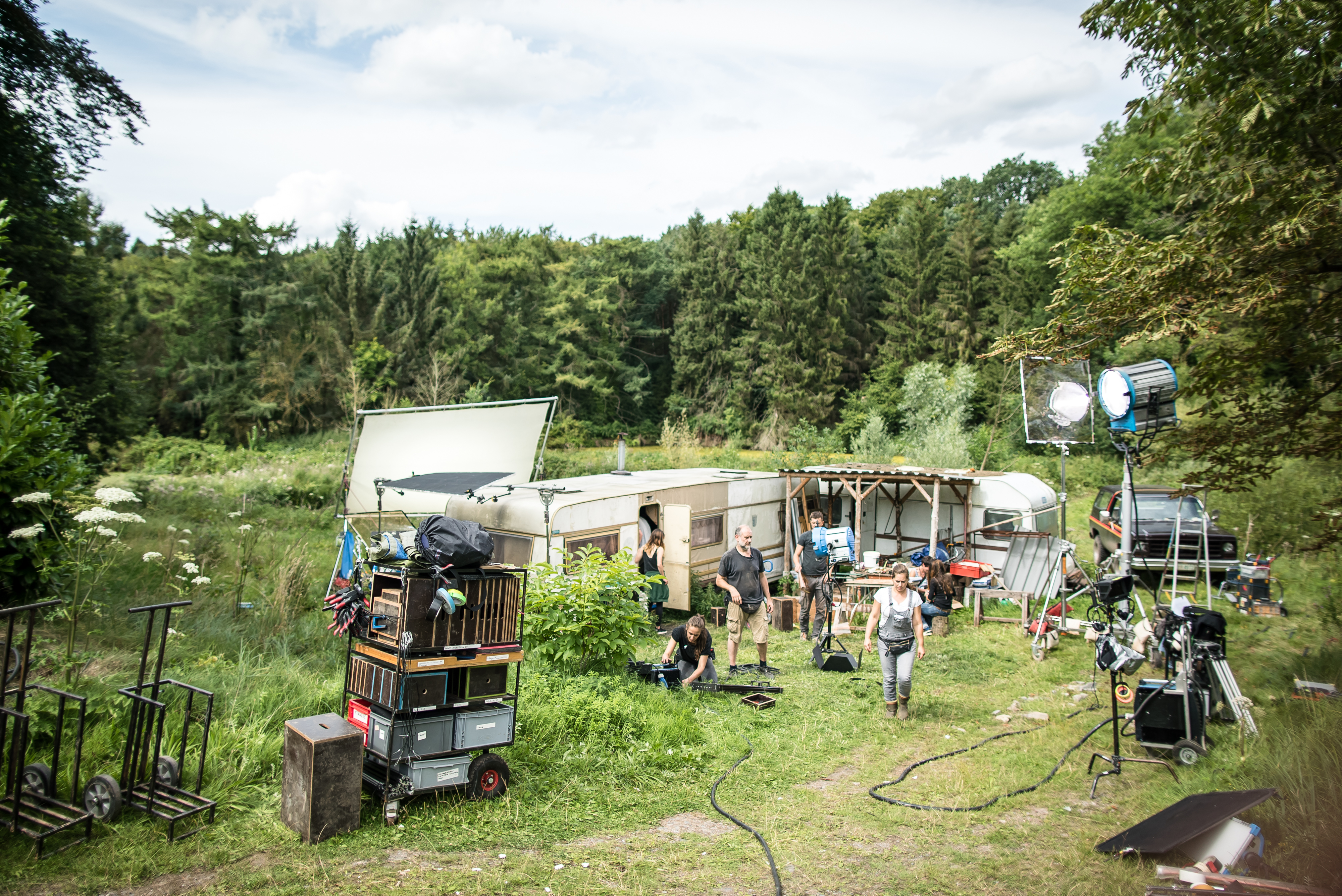
The Shadow Mountains — the woods where Red works and lives — were captured in the High Fens, a plateau region in the east of Belgium. The home he shares with Mandy was actually located about 100 miles away in Lasne, near Brussels, on the site of an unused Boy Scout pavilion that production designer Hubert Pouille extended and built out with walls and moveable pieces. An innocent kind of warmth permeates their abode, achieved with the use of practicals and Arri SkyPanels in the rafters, “intended to illustrate a sense of comfort, intimacy and safety, yet also to give the film something subtle and mundane to anchor these two characters in,” Loeb says.
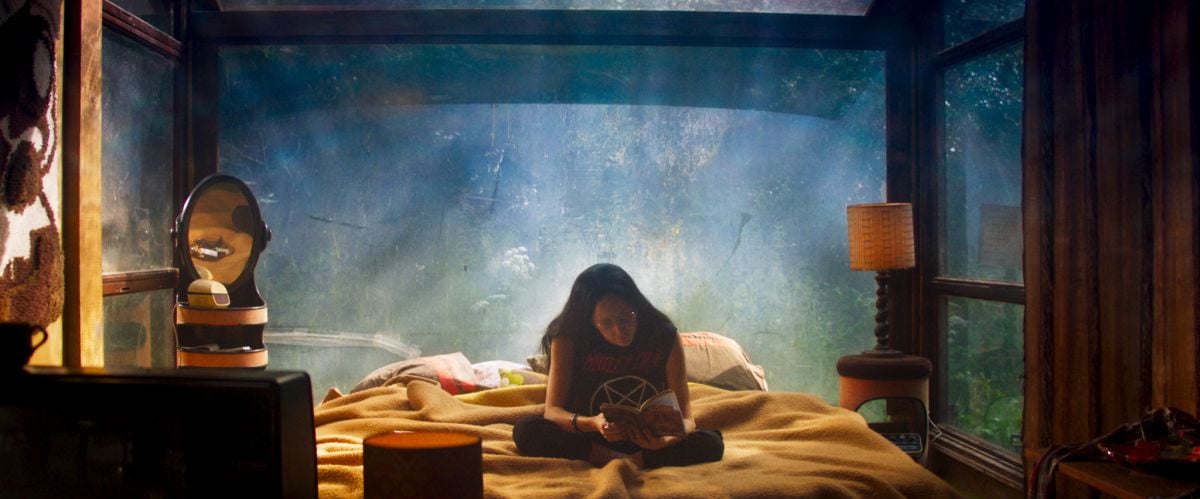
At this point in the story, nearly every creative decision was aligned with the notion that the universe revolves around the love these two characters share. For the night-interior scene in which Red and Mandy lie in their bed beneath an open skylight, musing about the planets, Pouille built for Loeb a 180-degree wooden bow measuring 2 meters in diameter — and van Rampelbergh lined its inside curve with a pair of Schnick Schnack Systems’ programmable RGB LED strips controlled by a ChamSys board from Audio Visual Lighting in Lebbeke. Janssens built a truss to mount the bow on a Chapman Hybrid III dolly. Van Rampelbergh programmed the LEDs with a left-to-right green-and-purple chase as the camera pushed in on the two lovers. (The bow rig was used once more for the ending flashback where Red first meets Mandy.) SkyPanels in the background provided the scene’s deep-blue ambience. “Our whole approach was to keep their life as domestic as possible, and then disrupt it,” Loeb says.
“The nighttime scenes were my biggest concern,” he adds. The production shot 17 of the show’s 29 shooting days at night in July and August in the High Fens, which gave the filmmakers about 7 1⁄2 hours of actual darkness. “We had to be on our toes, because it didn’t get dark until after 9, and when the sun came up at 5 there was nothing we could do about it.”
During conversations about budgetary issues, Cosmatos and Loeb decided to eliminate all ideas of ambient moonlight and go for something more visceral and direct for the production’s night-exterior scenes. It was also important to Cosmatos that there be no added practical lighting in the forest scenes, other than what could be motivated from the characters’ vehicles. “We would push the red of the Black Skulls’ taillights further with atmosphere and S30-C SkyPanels, so the red would take over and become the whole tone,” Loeb notes. The bikes’ headlights were enhanced with off-road LED work lights powered by V-mount batteries.
For the scene in which the Black Skulls show up in Red and Mandy’s bedroom, Loeb used strobing blue- and white-dialed S60-C SkyPanels to make it appear as if the abductors materialize from the darkness. “It was so hard to see on that set, which became a kind of psychological thing that worked to our advantage,” says Loeb. When Mandy meets the nefarious Jeremiah (Linus Roache) in the subsequent sequence, the light comes from above, falling upon Jeremiah from skirted, Full Grid-diffused, red-tuned SkyPanels in the rafters. The rest of the cult lounges about its periphery, at the edge of darkness.
“The whole film was pretty dark, actually,” Loeb says. He notes that his waveform highlights “were mostly reading from about 0 to 50. Very seldom did it sit in a higher range. For long periods of time, aka days, it would sit between 0 and 20 and I was waiting for someone to come and tell me the scenes were too dark — which, to my surprise, never really happened. I usually light at exposure, so what we’re seeing on set is what the film ends up looking like.” He set the cameras to 1,280 or 1,600 ISO. “As much as I like the dark, I like to give myself enough light so that we don’t have to be wide open, especially when shooting anamorphic,” he notes.
When Jeremiah’s seduction fails to sway Mandy’s resolve, his anger rises, at which point Loeb had the SkyPanels overhead tuned to a deeper, throbbing red. Jeremiah’s anger then blossoms into an inferno. Flame bars were used for various firelight effects throughout the movie, and in this case the production employed two 4'x4' frames with bulbs to accent the firelight’s illumination of the actors’ faces.
The villains disappear into the night, and Red — now bereft of Mandy — returns to the house where things have changed once again. He enters the bathroom, which was dressed and lit with SkyPanels hung above the set — diffused with an 8'x8' Light Grid — to look like a stage play, and in one long take, he smashes the door shut and begins to disintegrate.
“When you suffer trauma in your life, the world can become strange and hyper-real, so I wanted this moment to feel kind of like the theater of the absurd,” says Cosmatos. Loeb adds, “This is Red waking up into his own nightmare. We lit it with a much brighter and overall softer tone than the other scenes to make it stand out from the rest of the film.”
Red funnels his molten rage into a blazing forge, from which he fashions a gleaming battle-axe — the Tainted Axe — in a fiery montage shot at a blacksmith museum in Ittre. The scene’s set was designed to look like “something that could be in Red and Mandy’s backyard, so we eliminated the tools and materials that didn’t make sense for Red to have,” Loeb says. “Then we installed some fluorescent tubes in the background and blacked out the rest of the space with negative fill. We placed a few SkyPanels in the ceiling to give some texture to Nic’s face, and to get a reflection off of the axe. Otherwise, we wanted the flames of molten metal to do some of the work, and for Nic’s coverage we installed a little flame bar along the mold that reflects off the lenses of his aviator sunglasses.”
Some brief scenes at the compound of the Children of the New Dawn were shot in a massive abandoned house outside of Chaudfontaine, which Pouille later redesigned and rebuilt for the Black Skulls’ lair. While the cult compound possesses a warm, almost cozy atmosphere, the lair is a Stygian hovel with a garbage-strewn kitchen, a crypt-like living room and a torture dungeon next to a bottomless pit. It’s here that Red awakens — having suffered a defeat while battling the Black Skulls — to find himself nailed to the floor, awaiting a grim and unknown fate, until he frees himself, procures a box cutter, and makes his way upstairs.
According to Loeb, Cosmatos wanted a murky, dingy look for the Skulls’ environment. “This is one of those moments where Panos told me to forget what’s realistic and what needs to be motivated,” the cinematographer remarks. “The idea was, ‘Let’s just try to bring an atmosphere.’”
Loeb installed a pair of 2' tungsten-balanced fluorescent fixtures in the kitchen adjacent to the living room, where six 4'x2' hybrid LiteGear LiteMats — set to approximately 6,000K — were mounted to the ceiling, skinned with Full Grid Cloth diffusion, and angled-in from the edges to create a soft backlight and leave the center of the room underexposed. “Depending on the camera angle, I could switch off the LiteMats that were closest to camera to get more negative space in front of the camera or create negative fill,” Loeb explains. “Panos and I always wanted to keep the Black Skulls in a constant state of underexposure.”
Red kills his captors, snorts their cocaine, eats their acid, retrieves his axe, and escapes into the night. Outside, he engages the last of the Black Skulls next to a raging car fire in one of the movie’s two climactic boss battles — this one with a villain named Skratch (Ivailo Dimitrov). Janssen and crew laid dolly track in a three-piece U-shape, and Loeb and his team set up the two cameras — one fitted with an AWZ2 40-80mm (T2.8) zoom and the other with an Angenieux 50-500mm HR Anamorphic (T5.2), the latter of which was converted to anamorphic from a spherical 25-250mm HR (T3.5) via a rear adapter. The A-camera XT was placed on the Chapman Hybrid IIIdolly, and the B-cam Mini on a platform dolly. The cameras were operated side-by-side, with Loeb on A camera and Chris Renson on B. Loeb adds that after this shooting day, “we swapped the XT out for another Mini.”
The flames from the burning car provided Loeb with a key backlight source, with two 12K Dino lights illuminating some of the location’s rock walls. “On top of this,” Loeb says, “we had rigged a 12-by-12 frame equipped with [a silver reflector and] 200 100-watt bulbs [powered through a dimmer pack controlled by a three-channel LFXHub flicker box] onto one of our vehicles that would act as a moving stand for this unit. It would help wrap the light from the flames around a bit. We also had a small 4K balloon light that would be rigged to a stand for some gentle fill when needed.” Van Rampelbergh had originally built the 200-bulb unit for Glynn Speeckaert, ASC, AFC for the 2009 feature In the Beginning.
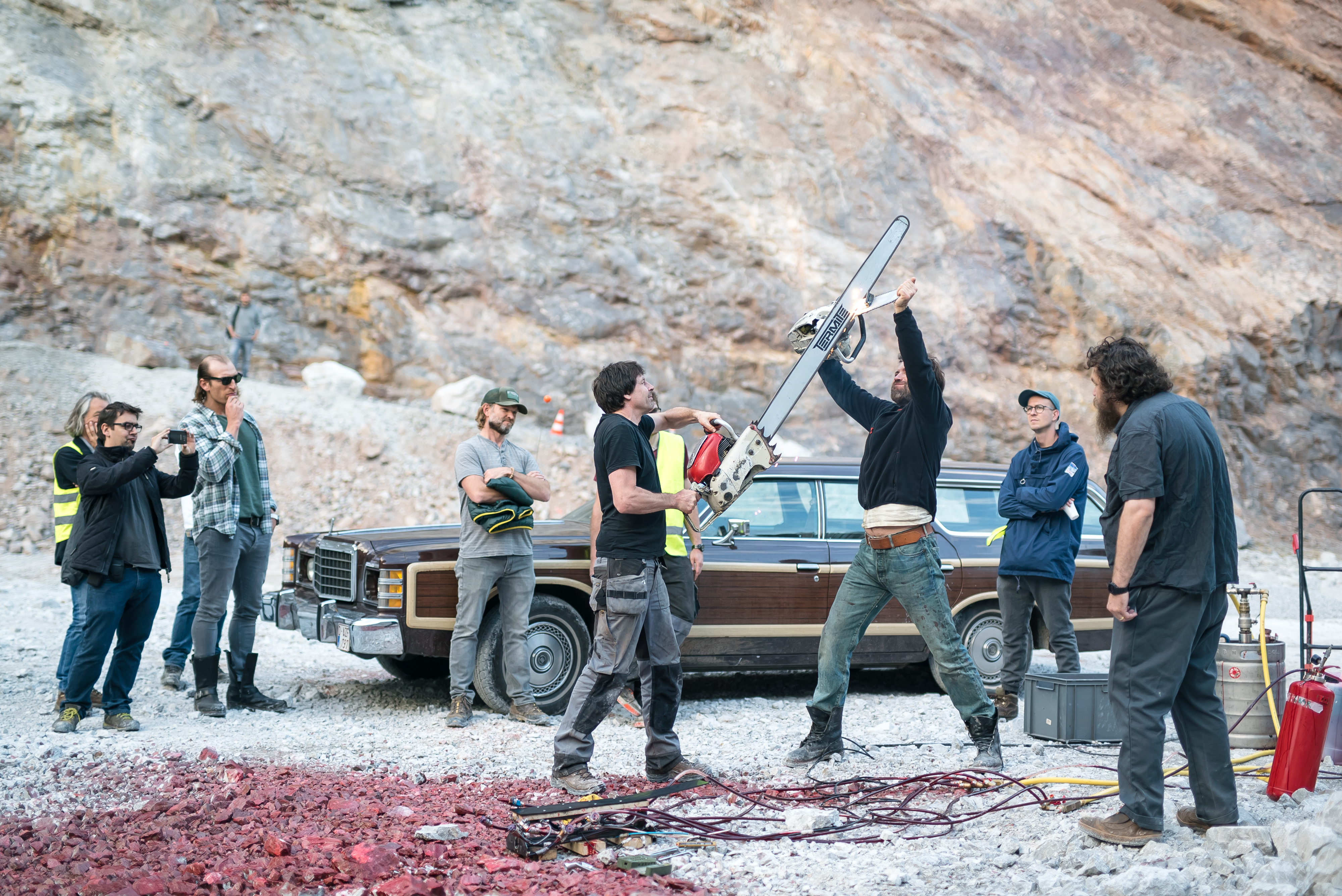
The scene was shot at the bottom of a quarry — in the city of Bévercé — that had 200' rock walls around it, where Pouille was already in the process of constructing the Children of the New Dawn’s church exterior. Loeb thus asked Pouille to bring in period-specific construction lights, which could then also be used to light the chainsaw fight between Red and the hulking Brother Klopek (Clément Baronnet), shot at La Sambre calcite quarry in Landelies.
For this second battle — which saw Johan Apers on B camera — the three-track, U-shaped camera setup from the fight with Skratch was set up again. Two halogen construction lights were raised 20' into the air and used as on-camera practicals. “These also became Red’s backlight for his direction, while six 400-watt halogen construction units provided backlight on the reverse side for Klopek, and another three 1,000-watt flood construction lamps were set up for general background fill in specific areas,” Loeb explains.
“When we turned into a profile, we had set up three 1K tungsten units to give backlight from this direction,” the cinematographer continues. “These units also gave a side kick for the other angles. We also set up a 12K Dino for the deep background to give some texture to the rocks, as well as a couple of 2K Blondes behind the church to illuminate the rock walls on the other side. Along the sides, we had rows of string lights giving a hint of texture along the rock faces closer to the camera.”
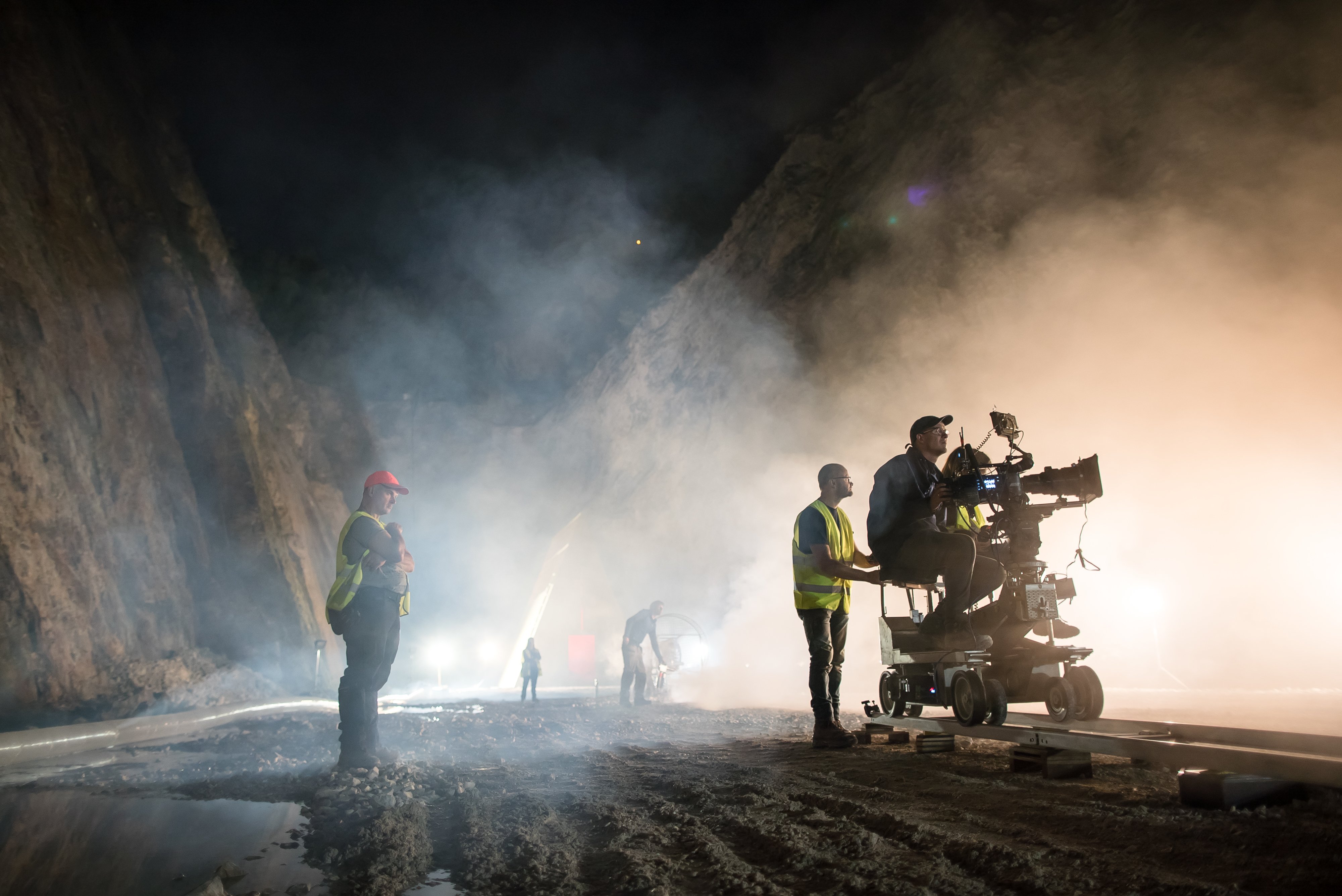
The aboveground church interior was filled with dry-ice mist, which served both as a practical effect and as diffusion for a single S30-C SkyPanel, set to primary red, behind the pulpit. A pair of 2K Blondes illuminated the rock face visible through the cross-shaped cutout on the back wall.
Red descends through a glowing orifice and into a cave system constructed on stages at Entre Deux Sons in Brussels. From this point, Loeb used almost exclusively red light, or employed a red lens filter, until the final confrontation with Jeremiah, with the one exception of a single practical floor lamp in the dungeon of Mother Marlene (Olwen Fouéré). Because of the cramped conditions and Loeb’s use of a 10mm spherical Primo, a LiteGear LiteStix LED was fitted onto the front of the camera while van Rampelberg floated a piece of hybrid LiteGear LED — “probably 6 inches by 4 inches and wrapped in diffusion,” Loeb notes — on a long pole.
Red finally corners Jeremiah in a cave at the end of a tunnel — a circular room about 9' across, with an open roof where eight DMX-controlled S30-C SkyPanels tuned to full red were arranged in a half-circle and diffused with dry-ice smoke.
Postproduction for Mandy was performed by Brussels-based Umedia. The work included visual-effects mattes, fixes and tweaks — and look development with colorist Andrea Chlebak, who worked from the Umedia Vancouver office. The final grade was performed at DameBlanche in Belgium with colorist Peter Bernaers, who worked in 2K resolution on a FilmLight Baselight platform.
“We would do simultaneous sessions, with Peter and myself at DameBlanche, while Panos was in Vancouver with Andrea making tweaks to our preliminary work,” Loeb says. “Then we’d compare to see which was the best approach. It went through stages — the first pass was quite natural, then we pushed it further and brought the colors even further out. Because a lot of the film was either lit red or was shot through a red filter, we’d bring in a bit of blue or purple to create separation in the shadows. Peter and Panos did the final [pass] on their own, as I was in prep on another feature and took time off between prep and principal photography on that project to do the first round of the grade.”
“Color isn’t just a representation of reality — it’s a lush, emotional texture, a flavor for the mind,” says Cosmatos. “Realism is open to interpretation, and if it feels right to you in the world of the film, I’m not going to try to tone that down. If anything, I’ll go as far as I can, until my taste tells me to stop.”
Loeb says he was “pushed to the edge of sanity by the pure nature of the project, both conceptually and logistically.” When he finally saw the movie, however, any questions and reservations he’d had during the production were finally resolved. “Even if I’d been given two months to prep, I’d still believe the approach we actually took was the right one,” the cinematographer muses. “A lot of things went according to plan, and — as it usually goes — quite a bit didn’t, but we were put in a place where we had to embrace our faults and mistakes, and those helped set the tone of the film and make it what it is.
“In the end,” Loeb concludes, “the film was shaped by a man who had a very clear vision in his mind — and seeing the film, along with its score, it becomes the experience Panos ultimately set out to create.”
You can see an extensive array of additional photography from the making of Mandy in this AC Gallery.






